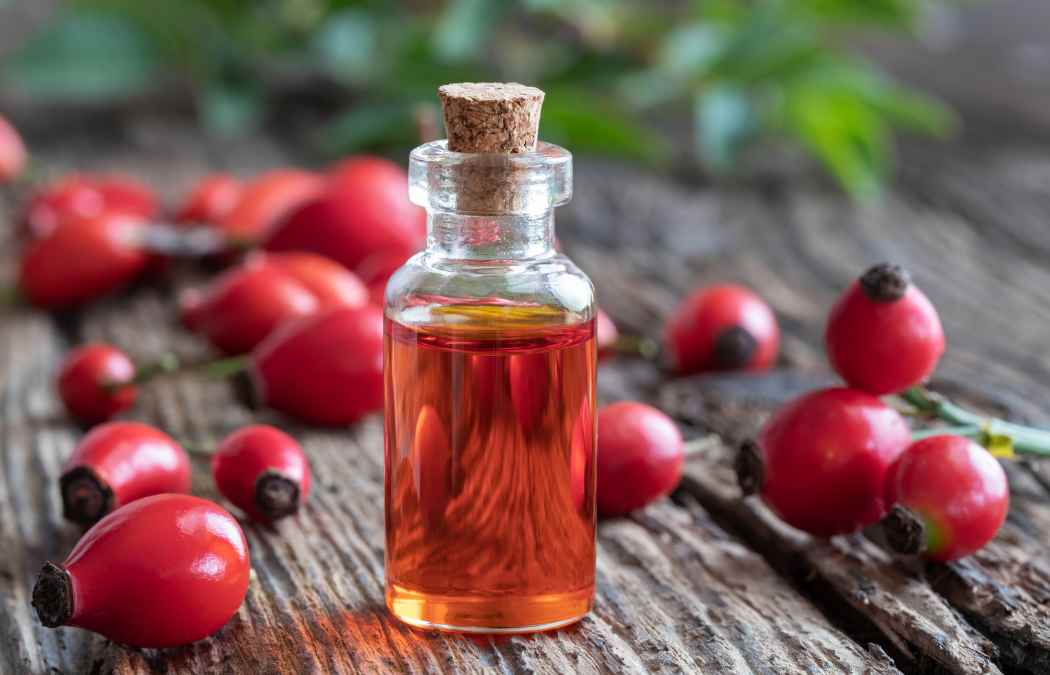3 Natural Oils for Mature Skin (With Real Tips, Not Just the Basics)
Mature skin deserves care that’s nourishing, gentle, and effective—without the fluff.
If you’ve landed here after spotting that Pin on natural oils, you’re in the right place.
This guide dives deeper than most—because while rosehip, jojoba, and sea buckthorn oil are amazing, there are real ways to get the most from them (and some things to avoid too).
Who This Is For
This guide is for anyone who:
- Is 40+ and wants skincare that actually works without the marketing fluff
- Prefers fewer, high-quality products over a 10-step routine
- Has sensitive, dry, or changing skin and is ready for something gentler
Disclaimer: Below I link to affiliate products at no extra cost to you if you decide to purchase through my links.

1. Rosehip Oil
Rosehip oil is one of those classic favourites for a reason. It’s rich in antioxidants—especially vitamin A and C—and it’s loaded with essential fatty acids like linoleic and linolenic acid, which are brilliant for dry or mature skin. If you’re looking to improve elasticity, soften lines, or fade sun spots, this one’s a gem.
How to use it: After cleansing your face, pat it slightly damp (yes, oils absorb better that way!). Then gently press 2–3 drops of rosehip oil into your skin. Nighttime is ideal, but you can use it in the morning too—just remember SPF.
Try this: Mix a drop or two with your evening moisturiser or use it with a gua sha or facial roller for a relaxing ritual that boosts circulation.
Watch out for: It can oxidise fast, so store it somewhere dark and cool. And if your skin is acne-prone, it’s worth patch testing first—some people find linoleic acid-rich oils can either help or hinder depending on their skin.
Be consistent, and don’t expect overnight miracles.
HERE’S MY RECOMMENDED ROSEHIP OIL.
2. Jojoba Oil
Jojoba is technically a wax, but it feels like a lightweight oil—and it mimics the natural sebum your skin produces.
That makes it a dream for both dry and oily skin. It’s particularly useful if your skin is feeling a bit all over the place, which can definitely happen with hormonal shifts.
How to use it: You can use jojoba oil daily—morning or night. Just 3–5 drops warmed between your hands, then pressed into the skin, is plenty. It sinks in quickly, so it works well under makeup too.
Bonus use: It’s a brilliant first cleanse or makeup remover. Massage it into dry skin, then wipe away with a warm, damp cloth.
Scalp tip: If you’ve got a dry scalp, try massaging it in 30 minutes before shampooing—it’s a game-changer.
Be aware: Even though it’s generally well-tolerated, always patch test new oils. And if you’re adding essential oils to your blend, keep it to 1 drop per tablespoon of jojoba.
What people don’t often say: If it feels greasy, you’re likely using too much. A single drop goes further than you’d think!
HERE’S MY RECOMMENDED JOJOBA OIL.
3. Sea Buckthorn Oil
Sea buckthorn oil is like a shot of espresso for your skin—it’s packed with brightening, barrier-repairing goodness. Think vitamins C and E, omega-7 (hard to find in plant oils), and beta-carotene. It’s especially great if your skin’s feeling dull, tired, or thin.
How to use it: This one’s potent, so start slowly. Add a drop or two into your usual serum or moisturiser 2–3 times a week. That’s usually enough to see the benefits without going full Oompa Loompa!
Fun tip: Make a quick glow mask—mix sea buckthorn oil with a bit of clay and aloe vera gel, apply for 10 minutes, then rinse off.
Tricky bit: Yes, it can stain. Mix with a carrier oil like jojoba, and don’t wear your favourite white pillowcase straight after using it.
Don’t forget: If you’ve got a sensitivity to seaberry or similar fruits, this oil might not be for you. Always do a patch test first.
Did you know? Omega-7, one of the key nutrients in sea buckthorn oil, is fantastic for plumping the skin and supporting repair—especially as collagen production slows with age.
HERE’S MY RECOMMENDED SEA BUCKTHORN OIL.
💡 Bonus Tips for Mature Skin Oil Use
Oils are wonderful, but how you use them makes all the difference. Here are a few little details that make a big impact:
- Always apply to damp skin. Oils seal in hydration—they don’t provide it on their own. Mist your face first, then apply.
- Layering is key. Go from lightest to heaviest: serum → oil → moisturiser. That way, your products can actually do their job.
- Be patient. Real changes in tone and texture take time. Think weeks, not days.
- Massage them in. Not only does it feel lovely, but it also helps with lymphatic drainage and circulation.
- Watch for reactions. Natural doesn’t always mean irritation-free. Keep an eye out, especially if you’re layering actives.
Final Notes & Safety
Before you start exploring these oils, just keep a few important things in mind:
- Always patch test first, even if it’s a natural oil. Skin can be unpredictable.
- Rosehip oil contains vitamin A, which can increase sun sensitivity—so don’t skip your SPF.
- And yes, some oils stain, so don’t dive into bed straight after applying!
Key takeaway
You don’t need dozens of products.
Just one good oil, used well, can make a noticeable difference.
If you’re just getting started, pick one oil that fits your needs best and see how your skin responds over a couple of weeks.
Keep things simple. Stay consistent.
And most of all, enjoy the ritual of taking care of your skin—it’s not just about results, but how you feel while doing it.
Patri xx

